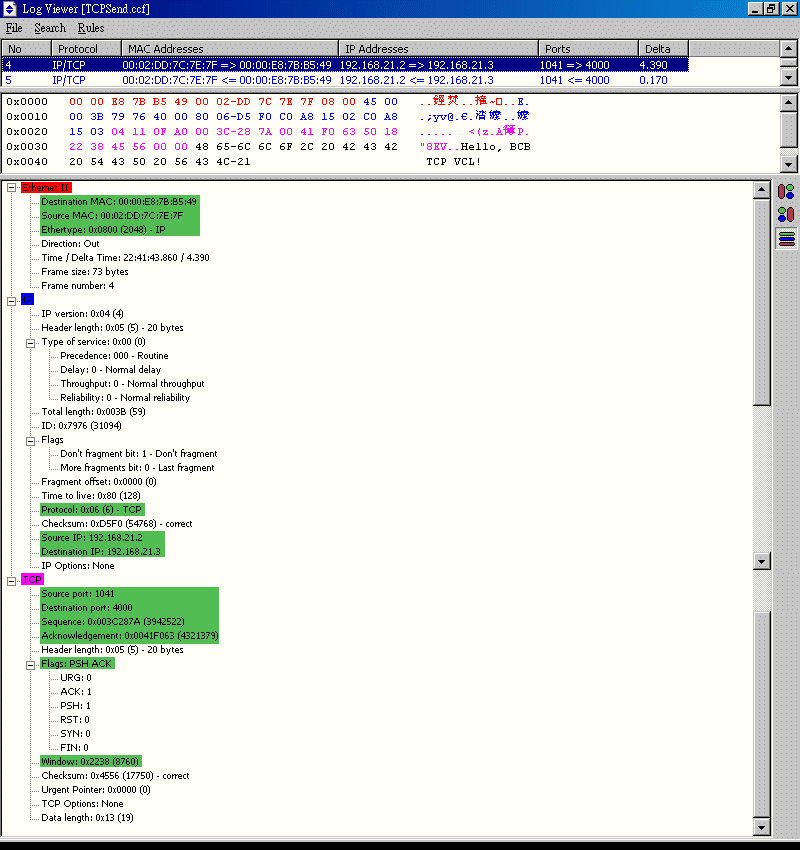TCP/IP - Internet Protocol Suite and Ethernet
by Chin-Shiuh Shieh on
International Standard Organization's Open System Interconnection Reference Model

- A reference model, not a rigid specification.
- Layered-Structure: Clearly-defined functionality for each layer and interfeace between layers facilitate independent implementation.
- Data Encapsulation: Headers carrying related information are added to packages as packages go down from upper layer to lower layer. The process is reversed at destination.
- Peer-to-Peer Communication: Each layer focuses only on the package content at correspondent layer.
OSI Model, DoD Model, and TCP/IP Protocol Suit
TCP/IP over Ethernet
Transport Layer - User Datagram Protocol (UDP)
- Connection-less, no error control, no flow control.
- UDP header carries information on Source Port, Destination Port, and others.
- Send data directly without establishing connection.
- A sample package from UDP_Message_Sender.zip to UDP_Message_Receiver.zip captured using CommView.



Transport Layer - Transmission Control Protocol (TCP)
- Connection-based, with error control and flow control
- TCP header carries information on Source Port, Destination Port, Sequence Number, Acknowledge Number, Control Flags, Window, and others.
- Sequence Number and Acknowledge Number are for error control and dealing with out-of-order packages, Window is for flow control, and Control Flags are for connection control.
- Establish connection before sending / receiving data:
- Send data while connected:
- Close Connection after Use
Internet Layer - Internet Protocol (IP)
- IP header carries information on Source IP Address, Destination IP Address, Protocol, routing information, and others.
- ARP (Address Resolution Protocol) is a sub-protocol dealing with the mapping between IP Address and MAC Address.
- DHCP (Dynamic Host Configuration Protocol) is sub-protocol for dynamic IP Address assignment.
Network Access Layer - Ethernet
- Ethernet header carries information on Source MAC Address, Destination MAC Address, Ethertype, and others.
- MAC (Media Access Control) Address is an unique idetifier for each network device.
- CSMA/CD: Carrier Sense Multiple Access with Collision Detection.
Wiring and Network Devices
- UTP (Unshielded Twisted Pair) Category 5, RJ-45
- Pin Configuration
- Patch Cord (1-1, 2-2, 3-3, 6-6) for Hub-to-PC and Hub Cascading
- Crossover Cord (1-3, 2-6, 3-1, 6-2) for PC-to-PC and Hub Shunting
- Network Interface Card
- Hub, Switching Hub
- Transducer
- Router
Request For Comments










